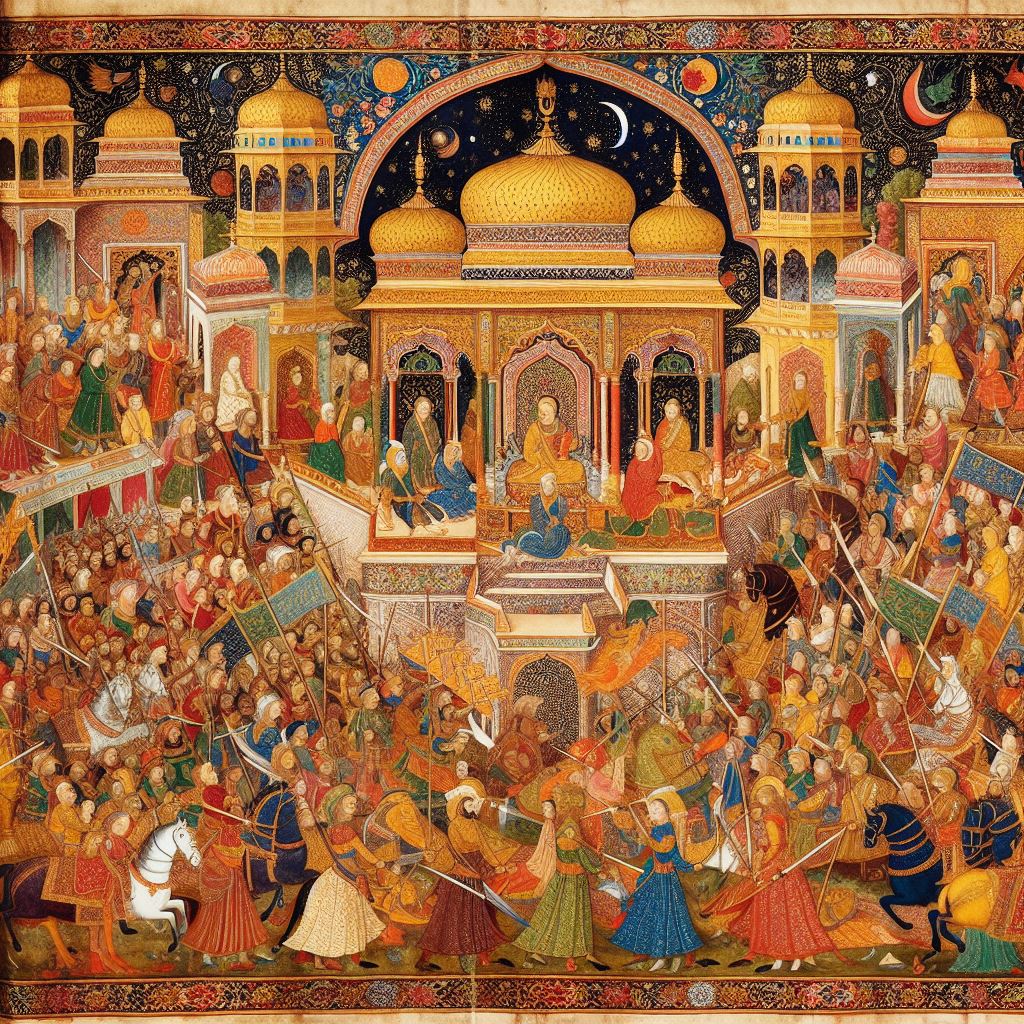Mughal Empire (1526–1857 CE)

The Mughal Empire, which existed from 1526 to 1857 CE, played a significant role in the history of the Indian subcontinent, including the region that is now Pakistan.
Here is an overview of the Mughal Empire’s presence in the history of Pakistan:
Babur’s Conquest (1526-1530):
The founder of the Mughal Empire, Babur, invaded India and won the First Battle of Panipat in 1526. This marked the beginning of the Mughal rule in the Indian subcontinent, including parts of present-day Pakistan.
Expansion under Akbar (1556-1605):
Babur’s grandson, Akbar, is considered one of the greatest Mughal emperors. He expanded the empire significantly, incorporating various regions of present-day Pakistan into the Mughal territories. Akbar’s administration was known for its religious tolerance and cultural synthesis.
Lahore and the Mughal Capitals:
Lahore became an important Mughal city during the reign of Akbar, who made it one of the empire’s major capitals. The Mughals also built several structures, including the Lahore Fort and the Badshahi Mosque, which are still prominent landmarks.
Shah Jahan and the Taj Mahal:
Shah Jahan, another notable Mughal emperor, constructed the iconic Taj Mahal in Agra as a mausoleum for his wife Mumtaz Mahal. While this is not directly related to Pakistan, it reflects the architectural and cultural legacy of the Mughals.
Decline and British Influence:
The later years of the Mughal Empire witnessed internal strife, including power struggles among various contenders for the throne. The decline of the Mughals coincided with the rise of European colonial powers, and by the mid-19th century, the British East India Company had become the dominant force in the Indian subcontinent.
The Sepoy Mutiny (1857):
The Indian Rebellion of 1857, also known as the Sepoy Mutiny, marked a turning point in the history of British India. The Mughal Emperor Bahadur Shah II played a symbolic role in the rebellion, but it ultimately led to the end of the Mughal Empire and the beginning of direct British rule.
The Mughal Empire left a lasting impact on the cultural, architectural, and historical landscape of present-day Pakistan. The remnants of Mughal architecture, including forts, palaces, and mosques, continue to be important cultural heritage sites in the region. The decline of the Mughal Empire also paved the way for the British colonial era in South Asia.
List of Mughal Emperors
The Mughal Empire, which existed in the Indian subcontinent from the early 16th century to the mid-19th century, was ruled by a series of emperors.
Here’s a list of Mughal Emperors and their key details:
- Babur (1526 – 1530)
- Founder of the Mughal Empire, Babur introduced Central Asian culture to India after the Battle of Panipat, establishing Mughal rule.
- Humayun (1530 – 1540, 1555 – 1556)
- Faced challenges from Sher Shah Suri, losing and regaining the empire, marking a period of instability during his reign.
- Akbar (1556 – 1605)
- Known for religious tolerance and administrative reforms, Akbar expanded the empire significantly and fostered cultural growth.
- Jahangir (1605 – 1627)
- Noted for his interest in art and culture; his wife Nur Jahan held significant influence in the court.
- Shah Jahan (1628 – 1658)
- Renowned for architectural marvels like the Taj Mahal but faced financial strain due to extensive construction.
- Aurangzeb (1658 – 1707)
- Implemented strict policies, expanded the empire, but his religious policies led to internal strife and decline.
- Azam Shah (1707)
- Ruled briefly after Aurangzeb’s death but struggled to secure power in a period of instability.
- Bahadur Shah I (1707 – 1712)
- Faced regional challenges and a decline in the empire’s power during his rule.
- Jahandar Shah (1712 – 1713)
- Known for lavish spending and inefficient governance, leading to discontent among nobles.
- Farrukhsiyar (1713 – 1719)
- Struggled to maintain stability within the empire and faced internal conflicts.
- Rafi ud-Darajat (1719)
- Ruled briefly amidst internal political struggles, with limited historical impact.
- Shah Jahan II (1719)
- His short reign lacked significant accomplishments or influence on the empire.
- Muhammad Shah (1719 – 1748)
- Ruled during a period of decline, marked by the increasing influence of the nobility.
- Ahmad Shah Bahadur (1748 – 1754)
- Faced challenges from regional powers and struggled to maintain control over the empire.
- Alamgir II (1754 – 1759)
- Faced challenges from regional governors and lacked strong central authority during his reign.
- Shah Jahan III (1759 – 1760)
- Had a brief reign with minimal impact on the empire’s affairs.
- Shah Alam II (1760 – 1806)
- Faced challenges from European colonialism, particularly the British East India Company.
- Shah Jahan IV (1788)
- A brief reign with minimal historical significance.
- Shah Alam II (Second Reign) (1788 – 1806)
- Continued to face challenges from British expansionism, contributing to the decline of Mughal authority.
- Akbar Shah II (1806 – 1837)
- Ruled during a period of declining Mughal influence and increasing British control.
- Bahadur Shah II Zafar (1837 – 1857)
- Last Mughal Emperor, witnessed the Indian Rebellion of 1857, marking the end of Mughal rule in India.
The decline of the Mughal Empire continued, and subsequent rulers were mostly symbolic figures with little actual power. The empire officially ended with the Indian Rebellion of 1857.